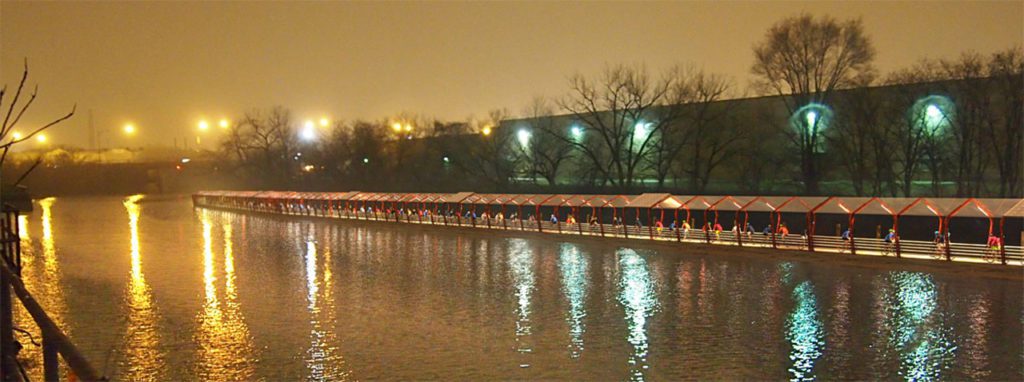Floating, solar-powered bike path being developed for Chicago river
Making use of latent infrastructure to give cyclists a better commute


The Chicago river runs alongside some of the busiest streets in the city running from densely populated neighbourhoods to the downtown area. The streets that run parallel are some of the busiest and the site of many bike crashes. Chicago has begun to consider installing a series of floating solar-powered bike paths along the river in order to provide riders with a car-free experience for part of the commute before re-connecting with existing bike paths. The project is being developed by SecondShore and is called RiverRide.

In the past five years, Chicago has added 100 miles of new bike lanes and by 2019 plans to add another 50 miles of better lanes with curbs to protect cyclists from traffic. Using the river to create a path goes a step further providing safety for cyclists away from the cities busy street. A move that planners hope will encourage more people to commute by bicycle.

RiverRide would be constructed using concrete pontoons with solar powered lighting and even possibly providing heating for the paths surface to prevent ice build up during the winter. Retractable awnings would also be run using solar power to protect riders from the elements.

The bike path could cost as much as US$5 to US$10 million for each mile of the pathway with SecondShore hoping to implement a pilot project by the summer of 2017 and begin installing sections in 2018. The final project would run six to eight miles connecting more than 20 miles of Chicago.

Critics of investing in separated infrastructure say it costs too much and that the money would be better spent on installing safer bike lanes on roads but the designers defend the project. “This fits with the mayor’s general economic strategy for the city—how do we make use of latent infrastructure?” said James Chuck, cofounder of SecondShore to Co.Exist. “In reality, 55 per cent of crashes and fatalities happen at intersections, and you can’t create a divided lane for bikes at intersections.”
